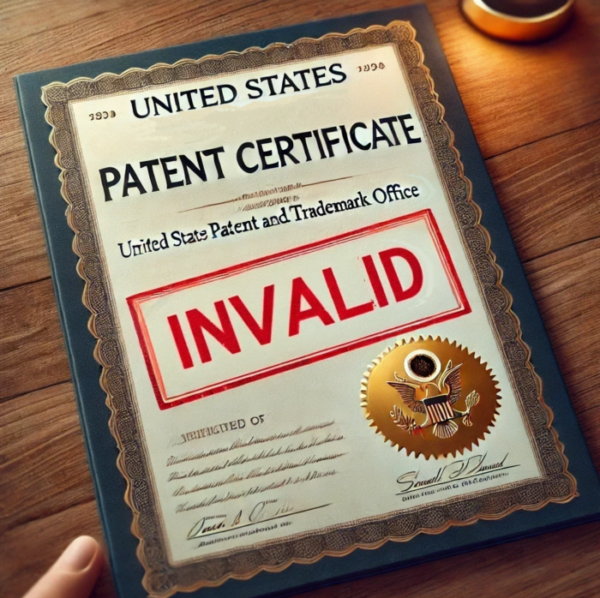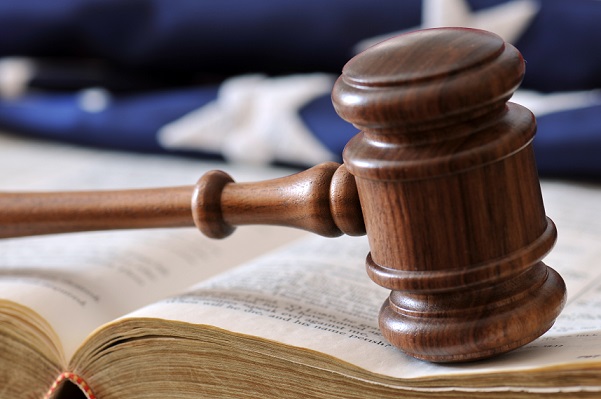
All issued patents are presumed valid, and the burden of proving invalidity rests on the party challenging the patent. A patent shall be presumed valid, and each claim shall be presumed valid independently of other claims under 35 U.S.C. § 282. This presumption applies to all claims within a patent, irrespective of whether they are independent or dependent, ensuring that each claim stands on its own in terms of validity. Dependent or multiple dependent claims shall be presumed valid even if dependent on an invalid claim. In a legal action involving infringement of a patent, the burden of establishing invalidity of a patent or any claim thereof belongs to the party asserting invalidity, which must demonstrate invalidity by clear and convincing evidence.
Patent invalidation can occur on several grounds, each of which challenges the legitimacy of the patent's claims to novelty, non-obviousness, or compliance with statutory requirements.
First, a patent can be invalidated if it is shown that the invention was not novel or non-obvious at the time of filing. Novelty requires that the invention must be entirely new and not previously disclosed by any prior art. Non-obviousness means that the invention must not be an obvious improvement or modification of existing knowledge to someone skilled in the relevant field. If prior art demonstrates that the invention lacks novelty or would have been obvious, the patent can be declared invalid.
Additionally, the patent claims, which define the scope of the invention, must be clear, concise, and fully supported by the patent specification. The specification should provide a detailed description of the invention, enabling someone skilled in the art to understand and practice it. If the claims are vague, overly broad, or not sufficiently backed by the specification, the patent can be challenged and invalidated.
Another ground for invalidation is the failure of the patent owner to disclose the best mode of practicing the invention. The best mode requirement mandates that the inventor must reveal the most effective way to carry out the invention at the time of filing. If it can be proven that the inventor knowingly withheld this information, the patent can be invalidated.
There are also bases of invalidation for failure to adhere to procedural rules, such as filing deadlines, and providing truthful and complete information during prosecution. Any failure to meet these regulatory requirements can result in the patent being invalidated, as the integrity of the patenting process depends on strict adherence to these standards.
Each of the foregoing grounds serves to ensure that only deserving inventions receive and maintain patent protection. Invalidity can be asserted as a defense in patent litigation or through administrative proceedings before the Patent Trial and Appeal Board (PTAB), the administrative tribunal of the United States Patent and Trademark Office (USPTO).

The standard of proof required to overturn this presumption is "clear and convincing evidence" (the "CCE Standard"). This high standard, established through judicial precedent, underscores the difficulty challengers face when attempting to invalidate a patent. The U.S. Supreme Court, in cases like Microsoft Corp. v. i4i Ltd. Partnership, affirmed this standard. Proving invalidity based on prior art that was already considered by the United States Patent and Trademark Office during examination presents a significant challenge due to the presumption under US patent law that the issued patent is valid. While the standard of proof remains CCE standard, courts typically afford less weight to prior art that the examiner previously reviewed. This heightened deference to the USPTO's expertise means challengers must present compelling arguments or additional evidence to convince the court that the examiner's decision was erroneous, making it more difficult to invalidate the patent under these circumstances.
While the presumption of validity is robust, it is not absolute. It is rebuttable, meaning that a challenger can invalidate a patent that fails to meet one or more of the statutory requirements, such as novelty, non-obviousness, or adequate disclosure. When a defendant raises an invalidity defense against federal claims of patent infringement, invalidity must be demonstrated by evidence that is clear and convincing. This standard is higher than the "preponderance of the evidence" standard used in most civil law matters but lower than the "beyond a reasonable doubt" standard applied in criminal cases. The CCE Standard requires a strong belief in the truth of the evidence presented but does not require absolute certainty.
One notable case illustrating the rebuttal of the presumption of validity is Sciele Pharma Inc. v. Lupin Ltd. The United States Court of Appeals for the Federal Circuit held that the presumption could be rebutted even when the prior art had been considered by the USPTO during prosecution. The court emphasized that the same obviousness analysis applies to issued patent claims, even where the prior art had been considered by the patent office. However, the challenging party must demonstrate invalidity with evidence that is clear and convincing. Such demonstration must address why the prior art references already considered by the USPTO render the claim clearly obvious in contradiction to the position taken by the USPTO during examination. In this manner, the weight of such evidence might be diminished because the USPTO had already presented a position of non-obviousness of the claims. To wit, when a defendant is challenging a patent based on prior art cited during examination of the patent, the defendant has to essentially demonstrate material failure by the USPTO in its analysis. Conversely, if the USPTO did not have notice of the prior patents or other relevant prior art presented in the invalidity challenge, the burden is somewhat reduced because there is no countervailing USPTO opinion that the claims are patentable over the unconsidered prior art. The CCE standard remains intact, demonstrating the high burden placed on challengers to have a issued patent held invalid.
There is good reason for the enhanced standard of proof to demonstrate that a patented invention is, in fact, unpatentable. The patent office is a federal agency that employs engineers, attorneys, and various professionals in all technical fields as patent examiners to bring their expertise to bear on whether a claimed invention is patentable. The patent applications filed with the USPTO go through a rigorous examination process by these technical professionals prior to the issuance of any granted patents.
The patent application process serves as a crucial vetting mechanism to prevent the issuance of undeserving patents. This process begins when inventors submit their patent applications, fully disclosing the invention in such terms that are clear and complete enough for a person skilled in the relevant field to understand and practice the disclosed invention. It is the USPTO's task to analyze submitted patent applications for adherence to the formal disclosure requirements and to find prior art relevant to the invention. The examiner conducts a patent search through patent databases covering publications of US and international patent offices. The examiner may also search non-patent databases and sources for other types of publications and disclosures, such as scientific and technical journals. US patents, foreign patents, and other forms of prior art that pre-date the effective date of the patent application (the effective filing date) are analyzed to determine whether the same invention or similar technologies have already been disclosed to the public. If such prior art is found, it is the USPTO's job to reject the application and explain why the claims in the patent applications lack novelty and/or are obviousness in view of the prior art. The USPTO issues office actions, formal communications that outline concerns or reasons for rejection. The applicant must respond to these office actions by addressing the issues raised, often involving amending claims or providing additional arguments to demonstrate that the invention is indeed novel and inventive.
The importance of this process lies in its ability to uphold the integrity of intellectual property rights provided by a patent. The examination process is a due diligence determination that is supposed to ensure that only truly novel and non-obvious inventions are patented. This careful examination is intended to maintain a fair and competitive environment for innovation. The search results generated during this process establish a record of the prior art considered during the examination process, which is crucial in later litigation proceeding, particularly where invalidity is asserted.

Prior art refers to existing knowledge, publications, patents, or any public disclosures that predate the effective date of a patent application. During patent examination, relevant prior art is sought and considered in determining whether an invention is novel and non-obvious. The patent examiner reviews the relevant prior art to assess whether the invention is patentable or if it has already been disclosed or would have been obvious to person of ordinary skill in the relevant field.
In cases where prior art was considered during the examination, its impact on patent invalidity defenses can be significant. When a patent is later challenged in litigation, the court requires that any invalidity claims based on the same prior art must be supported by CCE Standard in view of the USPTO's prior consideration thereof. In an action involving prior art previously considered by the USPTO, such an action must demonstrate that the examiner made an error or overlooked critical details. Therefore, it is difficult to make a case for invalidity based on prior art considered during patent examination, particularly if the prior art is specifically discussed during examination by the examiner.
A patent is invalid only if it does not satisfy specific legal requirements, including novelty, non-obviousness, and appropriate disclosure. Patent invalidation gives interested parties the power to defend their rights to use a technology that was already known to the public and oppose unfair grants of exclusivity to a patentee. The party asserting invalidity must give notice in the pleadings or otherwise in writing to the adverse party at least thirty days before the trial. Such notice must include the bases for the invalidity challenge and the name and address of any person who may be relied upon as the prior inventor or having prior knowledge. Alternatively, a patent can be challenged through administrative procedures through the USPTO.
The patent ex parte re-examination process is a post-grant procedure that allows the USPTO to reconsider the validity of an issued patent. This process can be initiated by the patent owner or a third party, often due to concerns about prior art that was not adequately considered during the original examination. Ex parte re-examination is carried out through the USPTO by an examiner, who reviews the request for re-examination by the patent owner or third party. The request must present a substantially new question of patentability in order to justify initiation of the re-exam process. Unconsidered prior art is a common basis for a request.
During re-examination, the examiner determines whether the claims of the patent are still valid based on the newly cited prior art or other issues raised. The re-examination process is not adversarial and provides a streamlined, lower-cost option to challenge validity.
If the USPTO finds that the new evidence invalidates the claims, the patentee is given the opportunity to amend the claims and/or present arguments for patentability. Conversely, if the USPTO confirms the claims, the patent emerges stronger, with reaffirmed validity. However, ex parte re-examination is not a favorable option for challenging validity base on prior art that was considered during examination. Inter-partes review before the PTAB provides a more favorable option for challenging a patent based the prior art considered in the patent application process.
The America Invents Act (AIA), enacted in 2011, introduced significant changes to the U.S. patent law, including the establishment of the Patent Trial and Appeal Board (PTAB). One of the critical effects of the AIA has been on the presumption of validity in post-grant proceedings. Notably, in Inter Partes Review (IPR) and Post Grant Review (PGR) proceedings, the presumption does not apply. This shift has had profound implications for patent holders, as the PTAB has invalidated patents under this new framework at a high rate.
These proceedings allow any party, regardless of being sued for infringement, to petition PTAB to invalidate issued patents. IPR and PGR are advantageous for challengers due to their faster, less expensive process, and lower burden of proof compared to judicial proceedings. PTAB was created to improve patent quality, reduce litigation costs, and combat "patent troll" lawsuits.
Because patents are not presumed valid in PTAB proceedings, concerns have been raised about the PTAB procedure and its impact on the patent system. PTAB has faced criticism for creating uncertainty in patent rights and stifling innovation, leading to calls for reform. A high rate of patent invalidation has led to questions about the patent review process at the PTAB or whether the examination should be deferred until enforcement is likely. These discussions suggest that the traditional presumption of validity may be losing some of its protective power, at least in certain contexts.
© 2024 Sierra IP Law, PC. The information provided herein does not constitute legal advice, but merely conveys general information that may be beneficial to the public, and should not be viewed as a substitute for legal consultation in a particular case.

"Mark and William are stellar in the capabilities, work ethic, character, knowledge, responsiveness, and quality of work. Hubby and I are incredibly grateful for them as they've done a phenomenal job working tirelessly over a time span of at least five years on a series of patents for hubby. Grateful that Fresno has such amazing patent attorneys! They're second to none and they never disappoint. Thank you, Mark, William, and your entire team!!"
Linda Guzman

Sierra IP Law, PC - Patents, Trademarks & Copyrights
FRESNO
7030 N. Fruit Ave.
Suite 110
Fresno, CA 93711
(559) 436-3800 | phone
BAKERSFIELD
1925 G. Street
Bakersfield, CA 93301
(661) 200-7724 | phone
SAN LUIS OBISPO
956 Walnut Street, 2nd Floor
San Luis Obispo, CA 93401
(805) 275-0943 | phone
SACRAMENTO
180 Promenade Circle, Suite 300
Sacramento, CA 95834
(916) 209-8525 | phone
MODESTO
1300 10th St., Suite F.
Modesto, CA 95345
(209) 286-0069 | phone
SANTA BARBARA
414 Olive Street
Santa Barbara, CA 93101
(805) 275-0943 | phone
SAN MATEO
1650 Borel Place, Suite 216
San Mateo, CA, CA 94402
(650) 398-1644. | phone
STOCKTON
110 N. San Joaquin St., 2nd Floor
Stockton, CA 95202
(209) 286-0069 | phone
PORTLAND
425 NW 10th Ave., Suite 200
Portland, OR 97209
(503) 343-9983 | phone
TACOMA
1201 Pacific Avenue, Suite 600
Tacoma, WA 98402
(253) 345-1545 | phone
KENNEWICK
1030 N Center Pkwy Suite N196
Kennewick, WA 99336
(509) 255-3442 | phone
2023 Sierra IP Law, PC - Patents, Trademarks & Copyrights - All Rights Reserved - Sitemap Privacy Lawyer Fresno, CA - Trademark Lawyer Modesto CA - Patent Lawyer Bakersfield, CA - Trademark Lawyer Bakersfield, CA - Patent Lawyer San Luis Obispo, CA - Trademark Lawyer San Luis Obispo, CA - Trademark Infringement Lawyer Tacoma WA - Internet Lawyer Bakersfield, CA - Trademark Lawyer Sacramento, CA - Patent Lawyer Sacramento, CA - Trademark Infringement Lawyer Sacrament CA - Patent Lawyer Tacoma WA - Intellectual Property Lawyer Tacoma WA - Trademark lawyer Tacoma WA - Portland Patent Attorney - Santa Barbara Patent Attorney - Santa Barbara Trademark Attorney